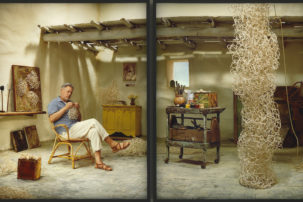“The goal of archival framing is to preserve without permanently damaging the work, and to be reversible,” says Mitch Robertson, founder of Superframe. “Yes, the colour and glass are what everyone sees, but if the art has been hot-glued to the backing, it’s a problem—especially if you want to sell on the secondary market.”
Framers are also the last line of defence for an artist’s moral rights. “Some clients come in and say, ‘Cut the ends off, it’s too big, restretch the canvas smaller.’ Then I say, ‘No, the artist is still alive, let’s check in with them. That’s up to the artist.’”
Anna Oster is a framing specialist at Toronto Image Works. “The thing I hear the most is, ‘The framing costs more than the art,’” says Oster. “That’s a sticking point for me because a lot of the time I think artists are just so desperate to sell their work that they are undervaluing it.”
Oster also notes that, if the best option is out of reach economically, a good framer will provide alternatives. “You need to work with somebody who’s willing to listen to your questions and answer them bluntly,” Oster says. “If you are working with someone, and they’re just saying, ‘Yes, whatever you want,’ how do you know what you’re getting?”
And another professional tip: storage affects framing. “If you’re not going to do something with the artwork right away,” says Oster, “don’t leave your art rolled up in a tube!”
This post is adapted from the Canadian Art Collecting Guide, out in our Spring 2020 issue, “Influence.”






